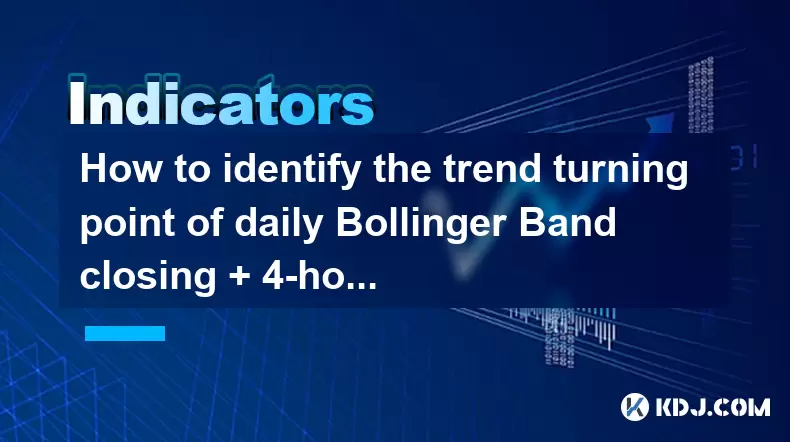-
 Bitcoin
Bitcoin $118300
-0.58% -
 Ethereum
Ethereum $3825
0.11% -
 XRP
XRP $3.137
-0.71% -
 Tether USDt
Tether USDt $0.9999
-0.01% -
 BNB
BNB $803.9
-3.37% -
 Solana
Solana $181.5
-1.94% -
 USDC
USDC $0.9999
0.01% -
 Dogecoin
Dogecoin $0.2238
-2.51% -
 TRON
TRON $0.3358
2.12% -
 Cardano
Cardano $0.7844
-2.16% -
 Hyperliquid
Hyperliquid $43.31
-1.48% -
 Sui
Sui $3.807
-4.04% -
 Stellar
Stellar $0.4203
-1.96% -
 Chainlink
Chainlink $17.79
-3.00% -
 Bitcoin Cash
Bitcoin Cash $567.8
-1.34% -
 Hedera
Hedera $0.2614
-4.30% -
 Avalanche
Avalanche $24.19
-4.46% -
 Litecoin
Litecoin $109.2
-0.74% -
 UNUS SED LEO
UNUS SED LEO $8.969
-0.01% -
 Toncoin
Toncoin $3.404
3.97% -
 Ethena USDe
Ethena USDe $1.001
-0.01% -
 Shiba Inu
Shiba Inu $0.00001307
-3.19% -
 Uniswap
Uniswap $10.33
-1.23% -
 Polkadot
Polkadot $3.884
-4.06% -
 Monero
Monero $312.9
-1.87% -
 Dai
Dai $1.000
0.01% -
 Bitget Token
Bitget Token $4.537
-2.24% -
 Pepe
Pepe $0.00001156
-3.40% -
 Cronos
Cronos $0.1437
-0.89% -
 Aave
Aave $282.8
-2.77%
How to identify the trend turning point of daily Bollinger Band closing + 4-hour MACD double line adhesion?
A daily close back inside Bollinger Bands combined with 4-hour MACD line adhesion signals potential trend reversal, especially when confirmed by momentum shift.
Jul 30, 2025 at 01:22 am

Understanding the Bollinger Band Closing Signal on the Daily Chart
The Bollinger Band closing signal on the daily chart is a key technical indicator used to detect potential trend exhaustion or reversal. Bollinger Bands consist of a middle band (typically a 20-period simple moving average) and two outer bands that represent standard deviations from the mean. When the daily candle closes outside the upper or lower band, it often indicates overbought or oversold conditions. A close beyond the upper band suggests strong bullish momentum may be unsustainable, while a close below the lower band implies intense bearish pressure that could be nearing exhaustion.
Traders pay close attention when price closes back inside the bands after such an extreme move. This re-entry into the bands can signal a shift in momentum. For example, if a cryptocurrency has been in a downtrend and the price closes below the lower band, a subsequent daily close back above the lower band may suggest weakening bearish control. Conversely, after an extended rally and a close above the upper band, a return inside the bands could indicate fading bullish strength. This reversal setup becomes more reliable when confirmed by other indicators such as the MACD.
Interpreting 4-Hour MACD Double Line Adhesion
The MACD (Moving Average Convergence Divergence) indicator consists of the MACD line (difference between 12-period and 26-period EMA), the signal line (9-period EMA of the MACD line), and the histogram. The term "double line adhesion" refers to a scenario where the MACD line and the signal line converge closely, almost touching or overlapping, on the 4-hour chart. This condition typically reflects a period of consolidation or indecision in the market.
When the two lines stick together for several consecutive 4-hour candles, it indicates that momentum is slowing down. This adhesion often precedes a breakout in either direction. In the context of trend reversal detection, adhesion after a prolonged trend can signal that the current momentum is losing steam. For instance, during a strong uptrend, if the MACD lines begin to stick together on the 4-hour timeframe, it may mean buyers are pausing, and sellers could soon take control. The key is to observe the direction in which the lines separate after the adhesion phase.
Combining Daily Bollinger Band Closure with 4-Hour MACD Adhesion
To identify a potential trend turning point, traders should look for confluence between the daily Bollinger Band closing signal and the 4-hour MACD double line adhesion. This multi-timeframe analysis increases the reliability of the signal. For example, if the daily candle closes back inside the Bollinger Bands after being outside, and simultaneously the 4-hour MACD lines are stuck together, it suggests both price structure and momentum are aligning for a reversal.
- Monitor the daily chart for a close back inside the bands after an extreme close outside.
- Switch to the 4-hour chart and confirm that the MACD line and signal line are adhered (visually touching or nearly overlapping).
- Ensure the adhesion occurs near the same price level or time as the Bollinger Band re-entry.
- Wait for the MACD lines to begin separating in the direction opposite to the prior trend.
This combination filters out false signals by requiring confirmation from both volatility (Bollinger Bands) and momentum (MACD). A bearish reversal is more credible when the daily close moves back inside from the upper band while the 4-hour MACD adhesion breaks downward.
Step-by-Step Setup for Identifying the Turning Point
To apply this strategy effectively, follow these steps precisely:
- Open your trading platform and load the daily timeframe chart for the cryptocurrency of interest.
- Apply the Bollinger Bands (20,2) indicator and observe recent candle behavior relative to the bands.
- Identify if the latest daily candle has closed back inside the bands after a close outside.
- Switch to the 4-hour chart of the same asset.
- Apply the MACD (12,26,9) indicator and visually inspect the relationship between the MACD line and the signal line.
- Look for a segment where the two lines are nearly touching or overlapping for at least 3–4 consecutive candles.
- Confirm that the timing of the adhesion overlaps with the daily Bollinger Band re-entry.
- Watch for the separation of the MACD lines; a downward cross suggests bearish reversal, upward separation indicates bullish reversal.
Use alerts or manual monitoring to catch these conditions in real time. Some platforms allow setting alerts for MACD line convergence or Bollinger Band touches, which can streamline the process.
Practical Example Using a Cryptocurrency Pair
Consider BTC/USDT on a recent price swing. Suppose Bitcoin has been rallying and the daily candle closes above the upper Bollinger Band, indicating overbought conditions. The next day, the candle closes back inside the upper band. This suggests the rally may be cooling. On the 4-hour chart, you notice that over the past 12 hours (3 candles), the MACD line and signal line have been nearly glued together around the zero line.
This adhesion shows that momentum is stalling. When the next 4-hour candle forms and the MACD line crosses below the signal line, it confirms bearish momentum is returning. The confluence of the daily Bollinger Band re-entry and the 4-hour MACD downward separation after adhesion strengthens the case for a trend reversal. Traders might use this as a signal to exit long positions or initiate short entries, depending on their strategy.
Common Mistakes and How to Avoid Them
One common error is acting on MACD adhesion alone without confirming the Bollinger Band signal. Adhesion can occur during sideways markets without leading to a trend reversal. Another mistake is ignoring the time alignment between the daily and 4-hour signals. If the Bollinger Band close happens two days before the MACD adhesion, the confluence is weak.
- Avoid entering trades solely based on one indicator’s signal.
- Always verify that both signals occur within the same 24- to 48-hour window.
- Use additional filters such as volume spikes or key support/resistance levels to increase confidence.
- Do not assume direction immediately after adhesion; wait for the actual separation of MACD lines.
Failure to wait for confirmation can lead to premature entries and losses, especially in volatile crypto markets.
Frequently Asked Questions
Q: Can this strategy be applied to altcoins with low trading volume?
A: It is less reliable on low-volume altcoins due to erratic price movements and false breakouts. High volatility can cause frequent Bollinger Band touches and misleading MACD adhesion. Stick to major pairs like BTC, ETH, or high-liquidity altcoins for better accuracy.
Q: How long should the MACD adhesion last to be considered valid?
A: A minimum of three consecutive 4-hour candles with the lines within close proximity (less than 0.5% apart) is recommended. Shorter adhesion periods may just be noise.
Q: What settings should I use for Bollinger Bands and MACD?
A: Use the standard settings: Bollinger Bands (20 periods, 2 standard deviations) and MACD (12,26,9). These are widely adopted and provide consistent results across most crypto assets.
Q: Does this method work during major news events or halvings?
A: During high-impact events, price often moves beyond technical patterns. The Bollinger Band and MACD signals may lag or give false readings due to sudden volume surges. Exercise caution and consider pausing automated strategies during such times.
Disclaimer:info@kdj.com
The information provided is not trading advice. kdj.com does not assume any responsibility for any investments made based on the information provided in this article. Cryptocurrencies are highly volatile and it is highly recommended that you invest with caution after thorough research!
If you believe that the content used on this website infringes your copyright, please contact us immediately (info@kdj.com) and we will delete it promptly.
- IPO, Bitcoin, and Treasury: A New Era of Crypto Investment?
- 2025-07-30 14:30:12
- Bitcoin, Binance, and Whales: Decoding the Latest Market Moves
- 2025-07-30 14:50:12
- Sinkhole Rescue: Migrant Workers' Heroism Sparks Fundraising in Tanjong Katong
- 2025-07-30 14:50:12
- Strategy, Bitcoin, and IPOs: A New York Perspective on 2025's Biggest Moves
- 2025-07-30 14:55:11
- TROLL Memecoin Mania: From Online Buzz to Market Reality
- 2025-07-30 14:55:11
- Coinbase, Circle, and the Power of Partnership: A New Era for Crypto?
- 2025-07-30 12:30:12
Related knowledge

What are the best WMA settings for day trading crypto?
Jul 30,2025 at 03:43pm
Understanding WMA in the Context of Crypto Day TradingThe Weighted Moving Average (WMA) is a technical indicator that assigns greater importance to re...

What are the advantages of using the WMA indicator for crypto?
Jul 30,2025 at 03:21pm
Understanding the WMA Indicator in Cryptocurrency TradingThe Weighted Moving Average (WMA) is a technical analysis tool widely used in cryptocurrency ...

What are the main differences between WMA, SMA, and EMA in crypto?
Jul 30,2025 at 02:50pm
Understanding the Role of Private Keys in Cryptocurrency WalletsEvery cryptocurrency wallet operates based on cryptographic principles, with the priva...

How is the WMA indicator calculated in cryptocurrency trading?
Jul 30,2025 at 02:35pm
Understanding the Weighted Moving Average (WMA) in Cryptocurrency TradingThe Weighted Moving Average (WMA) is a technical analysis tool widely used in...

What is the relationship between EMA and price momentum?
Jul 30,2025 at 04:07pm
Understanding EMA in Cryptocurrency TradingThe Exponential Moving Average (EMA) is a widely used technical indicator in the cryptocurrency trading com...

How does news and market sentiment affect EMA signals in crypto?
Jul 30,2025 at 03:00pm
Understanding EMA and Its Role in Crypto TradingThe Exponential Moving Average (EMA) is a widely used technical indicator in cryptocurrency trading th...

What are the best WMA settings for day trading crypto?
Jul 30,2025 at 03:43pm
Understanding WMA in the Context of Crypto Day TradingThe Weighted Moving Average (WMA) is a technical indicator that assigns greater importance to re...

What are the advantages of using the WMA indicator for crypto?
Jul 30,2025 at 03:21pm
Understanding the WMA Indicator in Cryptocurrency TradingThe Weighted Moving Average (WMA) is a technical analysis tool widely used in cryptocurrency ...

What are the main differences between WMA, SMA, and EMA in crypto?
Jul 30,2025 at 02:50pm
Understanding the Role of Private Keys in Cryptocurrency WalletsEvery cryptocurrency wallet operates based on cryptographic principles, with the priva...

How is the WMA indicator calculated in cryptocurrency trading?
Jul 30,2025 at 02:35pm
Understanding the Weighted Moving Average (WMA) in Cryptocurrency TradingThe Weighted Moving Average (WMA) is a technical analysis tool widely used in...

What is the relationship between EMA and price momentum?
Jul 30,2025 at 04:07pm
Understanding EMA in Cryptocurrency TradingThe Exponential Moving Average (EMA) is a widely used technical indicator in the cryptocurrency trading com...

How does news and market sentiment affect EMA signals in crypto?
Jul 30,2025 at 03:00pm
Understanding EMA and Its Role in Crypto TradingThe Exponential Moving Average (EMA) is a widely used technical indicator in cryptocurrency trading th...
See all articles

























































































